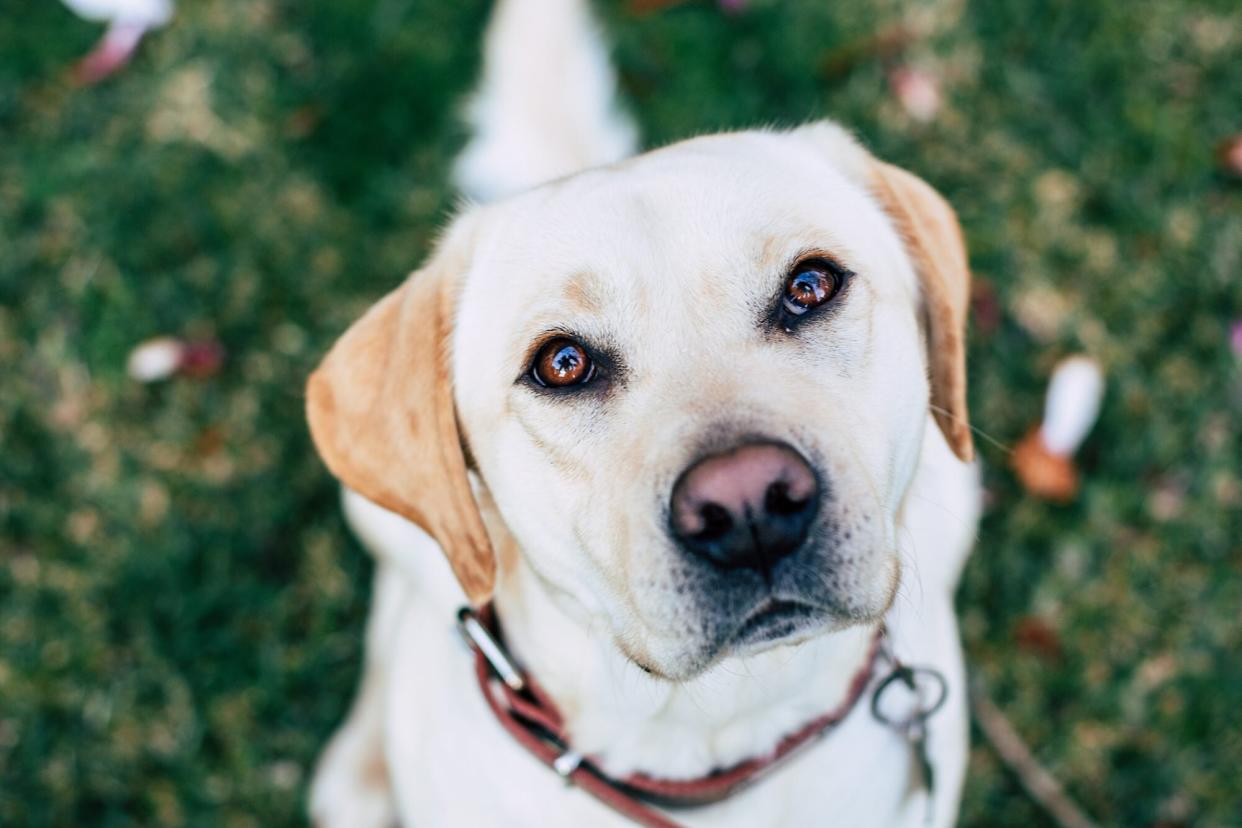IVDD in Dogs: How to Diagnose and Treat Your Pup's Spinal Problems

Alexandra Fernandes / 500px/ Getty
Just like for us, back problems in dogs can be annoying, debilitating, and most of all painful—especially when it comes to IVDD (intervertebral disc disease).
IVDD can cause as little as minor back pain for your dog, but sometimes it can be much more severe, says Michael Petty, DVM and author of Dr. Petty's Pain Relief for Dogs: The Complete Medical and Integrative Guide to Treating Pain.
The key for treating your dog is to keep at it. Your dog can recover and continue to live a happy life. Don't think you need to opt for euthanasia right away.
"These cases can take a long time," he says. "... Be patient."
What is IVDD?
Intervertebral discs are the hockey puck-like pads or material that sit between your dog's vertebrae. Their outsides are fibrous while the insides are made up of more of a gelatin-like consistency, Petty says. The discs are there to provide a cushion for your dog's spine as she moves around.
Petty offers up two main causes of intervertebral disc disease. One is simply age. The "jelly" part of the discs will dry up as your dog gets older, making them more susceptible to rupturing or breaking. That's IVDD.
Younger dogs can sustain IVDD from an impact, exercise, or action that causes excess pressure on an intervertebral disc, causing it to rupture, Petty says.
RELATED: Ailments of Aging Dogs: 5 Health Challenges to Watch for in Your Sweet Senior Pup
Symptoms of IVDD in Dogs
These can run the gamut from your dog having minor back pain all the way to paralysis. A lot of it depends on the part of your dog's spine the IVDD is hurting.
"The higher up it is, the higher the potential for causing problems," Petty says.
How can you tell at home? Well, paralysis is pretty easy to see, but other signs might include your dog stumbling, misplacing her back feet, and "knuckling over"—walking on the tops of her feet. If it's severe enough, IVDD can also cause incontinence.
Now, those also could be signs that your dog is suffering from something like arthritis, Petty says. Your veterinarian can conduct a test to see: They'll flip your dog's foot upside down and hold it there for a few seconds and see if the dog notices and flips it back around.
"If they don't, then we know there is some neurologic dysfunction," Petty says.
The only way for your veterinarian to tell if your dog has IVDD for sure is through an MRI, though Petty says most vets will have a pretty good idea of the diagnosis after conducting an exam.
Dog Breeds Most Susceptible to IVDD
Dachshunds are most at-risk for IVDD, Petty says, adding that other short dogs with long bodies—such as basset hounds—can also be at risk.
Unfortunately, there's not really anything you can do to prevent IVDD. They're mostly just cases of bad luck, Petty says. But if you have a dachshund or other kind of sausage dog, he suggests making sure they get plenty of exercise that strengthens their core muscles. That way if they do run into disc problems, their core strength can still help them get around and eventually recover.
IVDD Treatment for Dogs
If there is any good news to finding out your dog has IVDD, it's that there's a variety of ways to treat it. But whether you choose surgery or one of the other so-called "conservative" treatments, make sure you are patient. Unless your vet recommends it, don't consider euthanasia.
"You can't expect something like this to necessarily get better in two weeks," Petty says. "You may see progress in two weeks but it's not necessarily going to get better in two weeks."
Surgical IVDD Treatment
Surgery used to be almost the only course of treatment for IVDD in dogs, Petty says. While that's no longer the case, It is still an option—albeit a costly one. But if your dog has an advanced case of IVDD that causes paralysis—and you've already tried other treatments—it might be the best way to go.
In most cases, surgeons will remove the parts of the disc or the spinal canal that are putting pressure on the spinal cord, hopefully allowing your dog to regain some mobility.
RELATED: Is Paying Your Vet Bills a Problem? Here's How to Find Help
Non-Surgical IVDD Treatments
Petty has led some dogs to recovery using alternatives to surgery: pain medicine, acupuncture, and physical therapy-type exercises. It takes longer than surgery does, but it also has a much-lower risk.
"The chances of recovery doing those [treatments] is similar to the chances of recovery from doing surgery—with a lot less potential of things going wrong," he says.
He adds that he's even gotten previously paralyzed dogs to wag their tails and even walk within weeks of the conservative treatments, namely acupuncture and certain rehabilitation exercises. You can even try those exercises at home or purchase your dog a helpful harness. Just ask your vet for guidance, and if you aren't seeing any progress, you can always ask your vet for a second opinion, Petty says.
The bottom line with IVDD is dogs in many cases can recover. Sometimes you and the vet might not be able to tell the difference between your pre- and post-IVDD dog. In other cases, your dog might still have trouble getting around—all four legs might not work in concert in what Petty calls "spinal walking"—but she's at least no longer paralyzed.
In any case, be patient and don't give up on your resilient best friend.
"The vast majority of dogs can be helped," Petty says.

